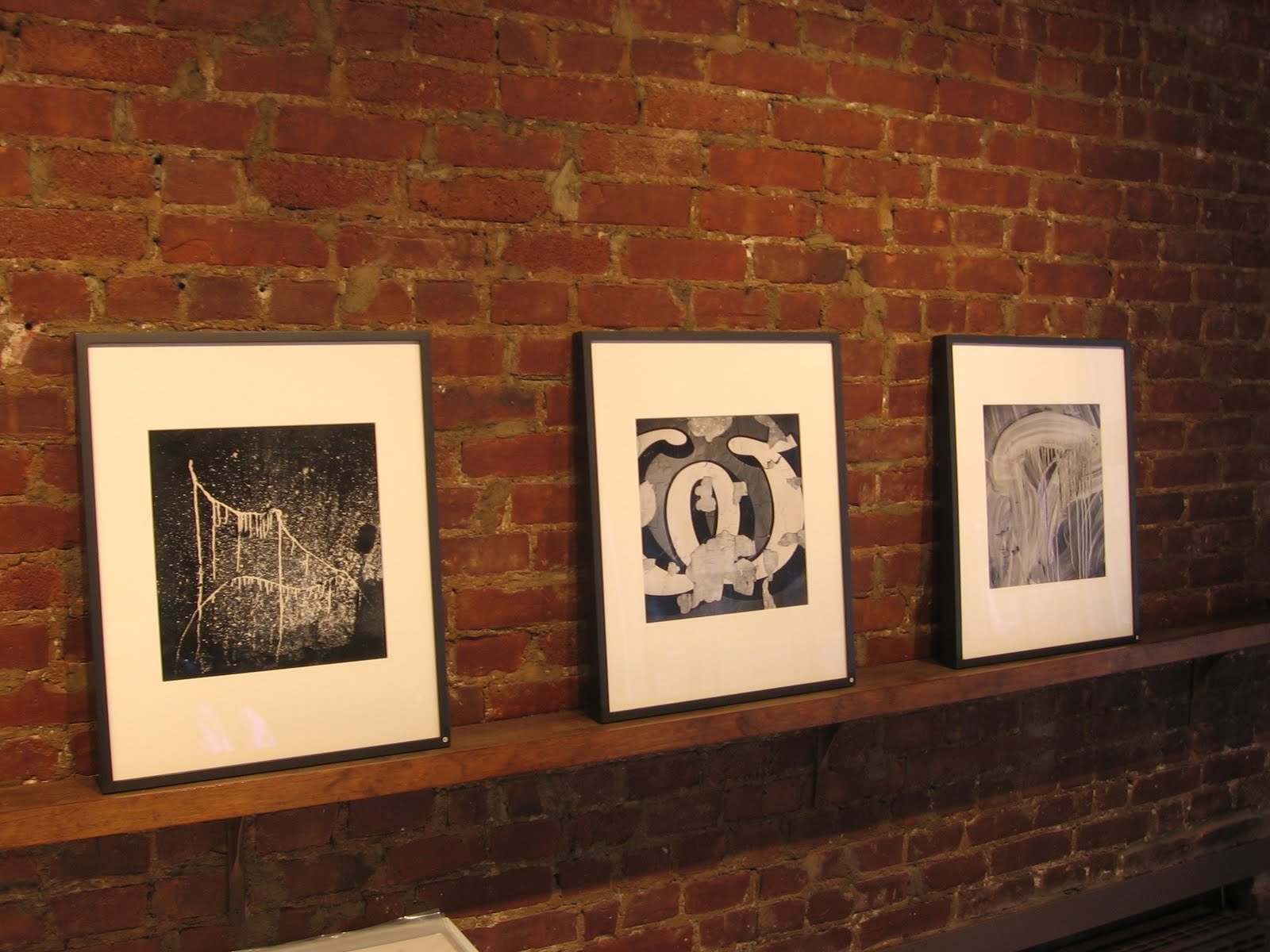 JTF (just the facts): A total of 48 black and white images, framed primarily in black and matted (a few are framed in white), and hung in the main gallery, hallway and smaller side room on the first floor, and in the main gallery and hallway on the second floor. All of the works are gelatin silver prints, taken in the period between 1933 and 1951; most are vintage prints, with a handful of later prints mixed in. The images were taken in London, Paris, Budapest, various locations in India, Chicago and New York. (Installation shots at right.)
JTF (just the facts): A total of 48 black and white images, framed primarily in black and matted (a few are framed in white), and hung in the main gallery, hallway and smaller side room on the first floor, and in the main gallery and hallway on the second floor. All of the works are gelatin silver prints, taken in the period between 1933 and 1951; most are vintage prints, with a handful of later prints mixed in. The images were taken in London, Paris, Budapest, various locations in India, Chicago and New York. (Installation shots at right.)
 Comments/Context: As collectors of nudes, over the years, we have come across the work of Hungarian photographer Ferenc Berko from time to time and wondered whether one of his best images would make a good addition to our collection, without knowing much about his entire body of work or his history as an artist; for us, he has always seemed somewhat peripheral to the main action of his better known contemporaries. Having recently taken on the artist’s estate, Gitterman Gallery has put together a well-edited survey show of Berko’s surprisingly varied early work that makes a strong case for reconsidering the value of his artistic contributions.
Comments/Context: As collectors of nudes, over the years, we have come across the work of Hungarian photographer Ferenc Berko from time to time and wondered whether one of his best images would make a good addition to our collection, without knowing much about his entire body of work or his history as an artist; for us, he has always seemed somewhat peripheral to the main action of his better known contemporaries. Having recently taken on the artist’s estate, Gitterman Gallery has put together a well-edited survey show of Berko’s surprisingly varied early work that makes a strong case for reconsidering the value of his artistic contributions..
 To avoid the increasing Nazi influence in Europe, Berko then moves across the globe to India to become a filmmaker. His photographs from the early 1940s combine a more humanist view of daily life in India with an undertone of modernist sensibility, evident in the architecture of his compositions. Berko’s life and photography take another unexpected turn after the war, when his friend László Moholy-Nagy invites him to teach photography at the ID in Chicago. His work from this period shows the influence of the New Bauhaus and of the early ideas of Abstract Expressionism: pared down urban geometries of fire escapes and telephone wires (think Callahan), contrasty solarized nudes, and gestural graphical abstractions of paint chips and found objects (think Siskind).
To avoid the increasing Nazi influence in Europe, Berko then moves across the globe to India to become a filmmaker. His photographs from the early 1940s combine a more humanist view of daily life in India with an undertone of modernist sensibility, evident in the architecture of his compositions. Berko’s life and photography take another unexpected turn after the war, when his friend László Moholy-Nagy invites him to teach photography at the ID in Chicago. His work from this period shows the influence of the New Bauhaus and of the early ideas of Abstract Expressionism: pared down urban geometries of fire escapes and telephone wires (think Callahan), contrasty solarized nudes, and gestural graphical abstractions of paint chips and found objects (think Siskind). Collector’s POV: The images in this show are priced between $3500 and $7500. Berko’s work has not found its way into the secondary markets much in the past several years; only a few lots have been sold, ranging in price between $1000 and $2000. As such, gallery retail is likely the only option for collectors interested in accessing his best work.
Collector’s POV: The images in this show are priced between $3500 and $7500. Berko’s work has not found its way into the secondary markets much in the past several years; only a few lots have been sold, ranging in price between $1000 and $2000. As such, gallery retail is likely the only option for collectors interested in accessing his best work.




